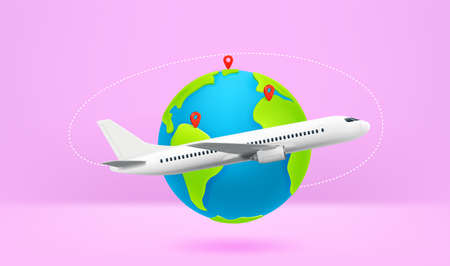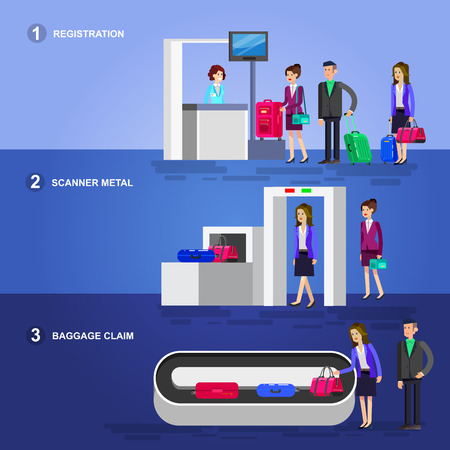1. Introduction: The Chaotic Pulse of Indian Metro Cities
Step into the heart of any Indian metro city—be it Mumbai with its relentless hustle, Delhi with its dynamic pace, or Bengaluru buzzing with tech dreams—and you are immediately swept up in a whirlwind of energy and motion. Every morning, millions join the great urban migration, flowing through crowded local trains, inching along congested roads, and navigating packed metro stations. The sheer density of people, honking vehicles, and the ever-present race against the clock creates an atmosphere both exhilarating and exhausting. In these cities, time is currency, yet paradoxically it is also the scarcest resource. Whether it’s the infamous Mumbai local at rush hour, Delhi’s jam-packed Outer Ring Road, or Bengaluru’s gridlocked Silk Board junction, residents are locked in a daily battle—juggling work commitments, family responsibilities, and personal ambitions—all while wrestling with the ticking clock and unpredictable traffic snarls. This complex dance between ambition and adversity sets the stage for unique challenges in time management and urban mobility that define life in India’s bustling metros.
Rush Hour Realities: Navigating the Jams
Anyone living in an Indian metro city like Mumbai, Bengaluru, or Delhi knows the daily ordeal of rush hour traffic. The roads transform into rivers of honking vehicles—autos, buses, two-wheelers, and private cars all jostling for space. This chaotic dance of horns and brakes is not just about inconvenience; it’s a major factor that eats away precious hours from our lives and impacts productivity.
Peak-Hour Traffic: When and Why?
The morning (8 am – 11 am) and evening (6 pm – 9 pm) peaks see office-goers, students, and service providers hitting the road simultaneously. Public transport gets overcrowded while arterial roads like Outer Ring Road in Bengaluru or Western Express Highway in Mumbai become notorious choke points. Let’s break down some key contributors to this congestion:
| Cause | Impact |
|---|---|
| Office/School Timings | Simultaneous movement increases vehicle density |
| Narrow Roads & Encroachments | Reduces effective carriageway width |
| Poor Public Transport Connectivity | More reliance on personal vehicles |
The Construction Conundrum
Urban development projects are a double-edged sword. Metro rail works, flyover constructions, and road-widening initiatives promise long-term relief but cause present-day nightmares for commuters. Barricades, diversions, and incomplete stretches leave motorists confused and frustrated, especially when project timelines stretch endlessly.
Unpredictable Weather: A Wild Card
Indian metros also face unpredictable weather patterns—heavy monsoons in Mumbai or sudden storms in Delhi—that can turn already jammed roads into virtual parking lots. Waterlogging, potholes, and reduced visibility make navigation even more challenging during these times.
Civic Events & VIP Movements
Add to this the frequent processions, marathons, political rallies, or VIP convoys that lead to unannounced road closures. Residents often rely on local news or WhatsApp forwards for real-time updates to avoid getting stuck mid-journey.
A Daily Balancing Act
This cocktail of rush-hour realities means every commuter must master the art of time management—leaving home early, checking Google Maps obsessively, or even rescheduling work hours if possible. For many Indians in metro cities, navigating traffic isn’t just about getting from point A to B; it’s an everyday exercise in patience and adaptability.

3. Public Transport Paradox: Boons and Burdens
In the ever-bustling heart of Indian metro cities, public transport is both a blessing and a challenge for millions of daily commuters. The metro rail systems in cities like Delhi, Mumbai, Bengaluru, and Kolkata have undoubtedly transformed urban travel by providing relatively quick, affordable, and pollution-free rides. For many office-goers and students, the metro is the backbone of time-efficient movement across sprawling cityscapes. Yet, this lifeline often comes with its own share of paradoxes. Peak-hour rushes mean serpentine queues at security checks and jostling for standing space, making the commute a test of patience and endurance.
Metros: Rapid Yet Crowded
While metros promise speed and predictability, overcrowding during peak times can negate these advantages. Trains running every few minutes still struggle to accommodate the surging population, especially in rapidly expanding suburbs. Delays due to technical glitches or maintenance work can derail one’s carefully planned schedule. For women and senior citizens, safety and comfort are ongoing concerns despite reserved coaches and security measures.
Buses: Accessibility vs. Reliability
Buses remain the most accessible mode of public transport, connecting even the farthest corners of cities. However, frequent breakdowns, unpredictable arrival times, and inadequate infrastructure—such as poorly maintained bus stops—often make bus travel unreliable. The lack of real-time updates further exacerbates planning woes for commuters trying to reach offices or schools on time.
Autos & App-Based Cabs: Convenience at a Cost
Auto-rickshaws and app-based cabs like Ola and Uber offer flexibility and door-to-door connectivity that buses and metros cannot match. Autos are synonymous with short-distance travel in India’s metros but are infamous for erratic fare negotiations and refusal to ply during busy hours or adverse weather. App-based cabs bring convenience with digital payments, GPS tracking, and air-conditioned comfort but surge pricing during peak hours or rain makes them unaffordable for many middle-class families. Moreover, traffic congestion often nullifies the time-saving benefits they promise.
The paradox lies in the fact that while Indian cities boast an array of public transport options catering to diverse needs, the collective limitations—overcrowding, unreliability, inconsistent pricing—undermine their efficiency as true enablers of time management. For urban dwellers striving to juggle work-life balance amidst relentless traffic snarls, the search for an ideal commute remains a daily struggle shaped by both boons and burdens.
4. Time Management: A Daily Jugaad
In the hustle and bustle of Indian metro cities like Mumbai, Delhi, Bengaluru, and Chennai, traffic congestion is not just a challenge—it’s a daily reality. Managing time amidst unpredictable commute durations requires a unique blend of resourcefulness and adaptability. This is where the concept of jugaad comes into play—a quintessentially Indian approach to creative problem-solving in the face of constraints.
The Spirit of Jugaad in Everyday Commutes
Both professionals and students have become masters at applying jugaad to navigate their daily routines. From rescheduling meetings on-the-go to leveraging technology for real-time traffic updates, individuals are constantly improvising to make the most out of their limited time.
Common Jugaad Strategies Used by Commuters
| Professionals | Students |
|---|---|
| Leaving home earlier or later depending on live traffic apps like Google Maps or Ola/Uber notifications. | Carrying textbooks or e-books to study during bus or metro rides, turning travel time into productive hours. |
| Holding conference calls from cabs or auto-rickshaws using noise-cancelling headphones. | Forming WhatsApp study groups for last-minute revision during lengthy traffic jams. |
| Splitting tasks—checking emails, planning the day, or catching up on industry news while stuck at signals. | Utilising offline apps for learning regional languages or competitive exam prep when internet connectivity drops. |
Cultural Adaptation: Making the Most of Every Minute
The resilience shown by Indians in adapting to time management woes is rooted deeply in culture. The ability to find innovative fixes—like sharing lifts with colleagues who live nearby (carpooling ka jugaad) or switching between multiple modes of transport based on current road conditions—is testimony to the everyday ingenuity that defines urban life here. In essence, traffic delays have become opportunities for micro-learning, social interaction, and even entrepreneurial brainstorming sessions within the confines of a carpool or metro compartment.
5. Impact on Work-Life Balance and Mental Health
Productivity Takes a Hit
The daily grind of navigating traffic in Indian metros like Mumbai, Bengaluru, and Delhi has a profound impact on productivity. Employees often find themselves stuck in endless jams or waiting for overcrowded metro trains. This not only eats into precious work hours but also leaves them mentally exhausted even before they reach the office. The unpredictability of commute times forces many to start their day much earlier, which ultimately reduces time available for personal pursuits or rest.
Social Life and Family Time Suffer
It’s common to hear urban dwellers lament about missing family dinners, children’s school events, or social gatherings because of commute delays. For working parents—especially women who still bear the brunt of household responsibilities—the challenge is even more severe. After battling the chaos of city roads, there is little energy left for meaningful connections at home. Over time, this routine erodes the delicate balance between professional obligations and personal life, often leaving individuals feeling isolated and unfulfilled.
Frontline Staff: The Unsung Warriors
For frontline workers—healthcare staff, delivery agents, security personnel—the pressure is doubled. Their jobs demand punctuality and resilience despite unpredictable travel conditions. Any delay can directly affect critical services or customer satisfaction. The physical toll of long commutes combined with shift work heightens stress levels and increases vulnerability to burnout.
Working Women Face Unique Challenges
The intersection of gender roles and urban commuting paints an even grimmer picture for working women in India’s metros. They often juggle demanding jobs along with familial expectations, making every minute count. Travel delays force many women to compromise on self-care, leisure activities, or even career growth opportunities as they struggle to meet both workplace and household demands.
Mental Health: An Overlooked Crisis
Persistent travel woes have led to rising anxiety, irritability, and chronic fatigue among urban professionals. The constant rush to beat traffic triggers stress responses that are detrimental to mental health. Without adequate downtime or support systems in place, this can spiral into more serious issues like depression or burnout—a reality that needs urgent attention from both policymakers and employers across India’s bustling metro cities.
6. Towards Smarter Solutions: Urban Innovations and Policy Push
Indian metro cities are at a crucial juncture where traditional approaches to traffic management no longer suffice. The urgency of time management woes has triggered a wave of urban innovations and policy reforms aimed at making daily commutes more efficient and less stressful for citizens across cities like Mumbai, Bengaluru, Delhi, and Hyderabad.
Road-Widening & Metro Expansions: Building Capacity
Civic authorities have ramped up road-widening projects and flyover constructions to ease notorious bottlenecks. Simultaneously, metro rail expansions in cities like Chennai and Pune offer much-needed alternatives to congested roads, promising faster, more reliable transit that can rival the convenience of private vehicles. Yet, these infrastructural improvements must keep pace with the relentless urban sprawl and population growth.
Flexible Work Timings: A Cultural Shift
Recognising that not all solutions are physical, many companies in India’s tech hubs are experimenting with staggered shifts and remote working options. This flexibility not only reduces peak-hour traffic but also empowers employees—especially women balancing work and home—to reclaim precious hours lost on the road. Government bodies too are considering policies that promote non-traditional work hours for their staff.
Digital Interventions: Smart Tech for Smart Cities
The rise of real-time navigation apps like Google Maps and Indian platforms such as MapmyIndia is helping commuters make informed decisions about routes and timing. Initiatives like FASTag have streamlined toll payments, while smart traffic signals in places like Bengaluru are beginning to adapt dynamically to congestion levels. The integration of ride-sharing services further optimises vehicle usage, offering relief from both pollution and parking nightmares.
Towards Equitable Mobility
Urban planners increasingly recognise the importance of inclusive solutions—improved pedestrian pathways, dedicated cycle tracks, and last-mile connectivity through e-rickshaws or shared autos are gaining traction. These innovations ensure that mobility remains accessible for all segments of society, not just car owners.
A Call for Collaborative Action
Ultimately, addressing traffic and travel challenges in Indian metros requires an ecosystem approach—government agencies, private enterprises, tech innovators, and everyday commuters must collaborate. Only through such collective action can our cities become spaces where efficient mobility and personal well-being go hand in hand.
7. Conclusion: Moving Towards Equitable and Efficient Mobility
As we look ahead, the journey towards resolving time management woes in Indian metro cities requires more than just better roads or faster trains—it demands a reimagining of urban mobility that is both equitable and efficient. Our metros are melting pots, bustling with working professionals, students, domestic workers, and elderly citizens, each facing unique challenges in their daily commutes. To truly make our cities inclusive, it is essential to prioritise accessible public transport, safe walking and cycling paths, and last-mile connectivity that respects the dignity of every commuter.
Building humane cities starts with listening to the lived experiences of all sections of society. Policy makers must engage directly with women travelling late at night, people with disabilities struggling for seamless movement, and informal sector workers who cannot afford expensive transit options. Solutions like staggered office timings, integrated ticketing across modes, and commuter-friendly apps in regional languages can go a long way in easing everyday stress.
Equity also means bridging the digital divide—making travel information universally available—and ensuring that safety is non-negotiable for all genders and age groups. Only by embracing diverse perspectives can we design cities that work for everyone, not just those with privilege or private vehicles.
The path forward lies in collective action. Citizens can demand accountability from authorities and participate in local mobility planning. Corporates can support flexible work arrangements to reduce rush-hour congestion. Urban planners can adopt global best practices while keeping local realities at heart.
Ultimately, an efficient metro city is one where people spend less time stuck in traffic and more time living meaningful lives—with family, friends, or simply pursuing their dreams. By focusing on fairness, sustainability, and empathy, Indian metros can set a benchmark for mobility that is truly world-class yet rooted in our own values of inclusivity and respect for all.

